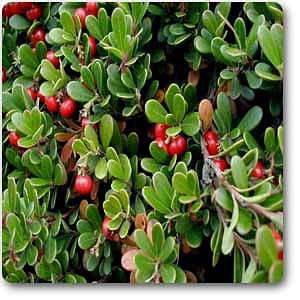Description
Bearberry is an evergreen shrub. It blooms anywhere between March and June and is a long-term re-vegetative species.
Arctostaphylos uva-ursi, known by a large number of common names including common bearberry and kinninnick, is an extremely winter hardy, creeping, slow-growing, prostrate, woody evergreen shrub that typically grows to 6-12 inch tall but spreads over time by flexible branching (roots at the nodes) to 3-6 inch wide or more.
Plant Specifications
| Common Name | Bearberry, Kinnikinnick, Red Bearberry, Cowberry, Manzanita, Mealberry. |
| Maximum Reachable Height | 0.50 to 1.00 feet |
| Flower Colour | White with tinge of pink |
| Bloom Time | April to May |
| Difficulty Level | easy to grow |
Planting and care
Arctostaphylos uva care
Use bearberry on hillsides or over rocky ground that needs coverage. It, s ideal for use as ground cover underneath shrubs or around trees. Plant it along a rock wall and it will cascade down over the edge, softening the look of your landscape perimeter. If you live near the ocean, bearberry is salt-resistant, so use it as a seaside ground cover.
| Sunlight | Full sun to part shade |
| Watering | Dry to medium |
| Soil | well-drained |
| Fertilizer | Apply for organic fertilizer |
Arctostaphylos uva special feature
Attracts: BirdsFruit: Showybears, birds and small mammals love the fruits.
Arctostaphylos uva uses
Ornamental Use:
- Sprigs of green leaves with red berries may be used as Christmas decorations
Medicinal Use:
- Teas have been made from certain plant parts (leaves, stems and roots) for a variety of medicinal purposes (antiseptic, astringent and diuretic)
- Leaves are rich in tannins and have been used in the process of tanning hides/leather
Culinary Use:
- Its berries are edible raw or cooked
- You can make a refreshing tea from its young leaves



Comment